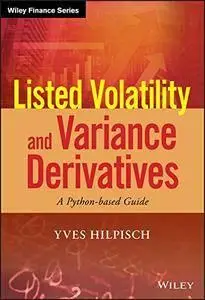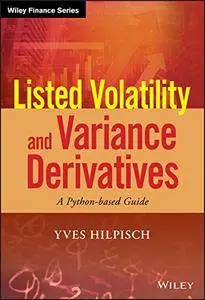Yves Hilpisch, "Listed Volatility and Variance Derivatives: A Python-based Guide"
2016 | ISBN-10: 1119167914 | 368 pages | PDF | 10 MB
2016 | ISBN-10: 1119167914 | 368 pages | PDF | 10 MB
Python in general requires much less code than other languages, like C++ or C#, to accomplish the same goal. Because of this and also due to its powerful ecosystem of libraries, it has become one of the most widely used programming languages and technology platforms in the financial industry. Listed Volatility and Variance Derivatives is your Python-based A-to-Z guide to the most important listed volatility and variance derivatives provided by Eurex.
This complete guide is the first of its kind to offer practical, expert insight into how industry leaders use Python to undertake complex quantitative analysis in the field. From understanding the fundamental techniques of modeling to reproducing your own results and graphics with Jupyter Notebooks, this single resource gives you everything you need to use this powerful language to support portfolio, trading and risk management functions.
Enhance and streamline your quantitative analysis with Listed Volatility and Variance Derivatives.
Robust Analytics for Trading Listed Volatility and Variance Derivatives
Whether you're new to programming or want to step up from C++, C# or Matlab, Listed Volatility and Variance Derivatives jumpstarts you on a faster, more powerful way to execute quantitative analysis to trade listed volatility and variance products. No other resource offers indepth coverage on European products provided by Eurex along with step-by-step explanations of the Python codes you need to gain an edge in this competitive space.
Complete with an accompanying website allowing you to download all the code inside, you can easily and immediately execute the covered techniques for:
Using Python to analyze data and financials and reproduce stylized facts on volatility and variance markets.
Modeling volatility and variance and replicating variance in a model-free fashion.
Navigating the micro-structure elements of the markets for listed volatility and variance derivatives.
The Python ecosystem thrives in the most demanding financial environments, and Listed Volatility and Variance Derivatives is the only guidebook for using it to master this analytics space



